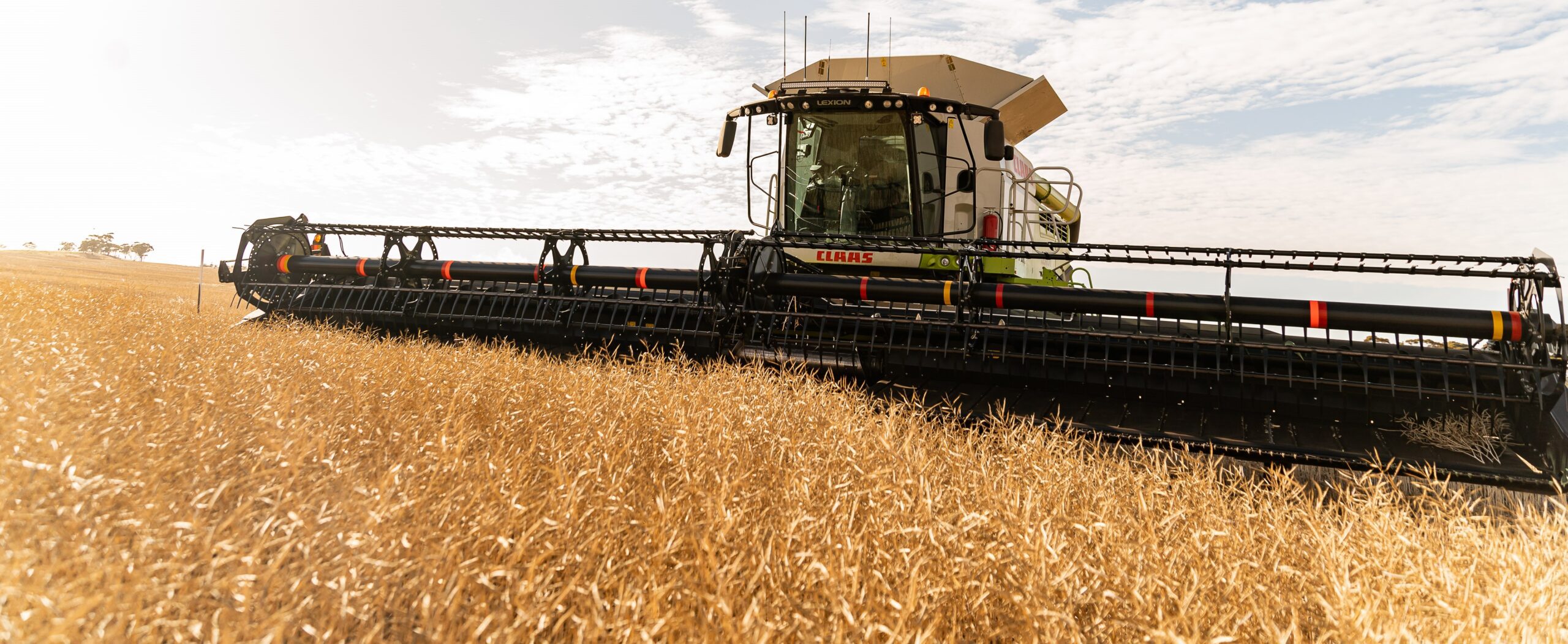Written on 21st February 2024.
We have recently seen international and local prices fall away across all grains. What has brought on this bearish mood in the market and what is on the horizon that might reverse or continue the trend?
Firstly, as always in ag commodity markets, there’s the weather. It’s a bit early to see the usual spring volatility as northern hemisphere winter wheat crops are still under snow cover and field work is yet to commence. However, the US and parts of Canada have experienced their warmest winter in over 130 years with warmer weather forecast to continue. This could provide an opportunity for an early start to the season but unless they get decent snowfalls in March and/or spring rains it could also be a dry start. This could not only affect the winter wheat crop as it breaks dormancy but also the upcoming spring wheat crop as well as the corn and soybean crops to be planted in the spring.
The season in Russia so far has been favorable for the winter wheat crop, and this looks set to continue into their spring. Meanwhile however, over in western Europe, after a very wet start to their season in their autumn we are now seeing poor crop conditions in countries like France where their crop conditions reports are showing crops as way below the average for this time of year.
All of this sets the market up for the usual weather-related volatility as we head into the northern hemisphere spring.
Now to look at some specific supply and demand issues we are watching.
Wheat has been struggling for demand with world supplies proving to be plentiful. The last bit of excitement was when China bought wheat off the US and some other origins, but this has not been followed up with further purchases, disappointing the market.
The geo-political disruptions we saw in the Black Sea region from the Russian/Ukraine conflict seem to have been overcome with grain flowing onto the world market albeit at a significantly higher cost which has been passed onto the Ukrainian farmer. Some of the routes for Ukrainian grain has been via land through neighboring countries and this has caused their local prices to fall with the additional supplies. Farmers in Poland have been demonstrating recently about this.
With Russian wheat stocks no longer tied up at home from sanctions their large carry over has been hanging over the market. The Russians however have put a floor in their wheat price but whilst Russian wheat offers have been respecting this floor, competing origins have been undercutting this at some of the major tenders and this has led to the floor gradually lowering. Usually, we would expect there to be a premium paid for other origins of wheat such as French, but this situation has led to French values being at a par and even discount to Russian values to get wheat moving. This story still has a way to play out as any news suggesting that sanctions could be placed on Russian wheat could see the market move higher.
Whilst the 2023 and 2024 wheat crop in Russia is forecast to be below the record 2021 crop, they could still both be larger than previous years. There is however a lot of water to go under the bridge on these crops, such as weather and harvest so this just remains another item to keep an eye on.
In the US we are coming into spring which traditionally produces volatility as the crop comes out from under snow cover and is usually killed off and revived at least a few times. As mentioned above, the US winter has been one of the warmest and this has reduced snow cover which in turn reduces moisture for the crop as it breaks dormancy.
Argentina’s has made a big comeback on all grains with the return of a good season to their ag areas. Argentina is a key exporter, and their return comes on the back of continued growth in exports of corn and soybeans from Brazil.
The situation in oilseeds also has a lot of moving parts. As we all have heard many times, the demand for biodiesel feed stock continues to build with increasing mandates for biodiesel. This demand will be met firstly by the cheapest source of feedstock and at the moment that’s used cooking oil. In the US there is a significant campaign for the use of US soybean oil as a feedstock with the crush capacity increasing on expectations of this but as always this has not been a smooth road to follow. Soybeans saw their growth in the first place from demand for the meal for animal feed and the oil was often seen as the poor cousin. Now as oil demand is increasing some areas are dealing with a surplus of meal and this is affecting crush margin.
Looking at feed grains means a look at corn in particular. Last season was a record production year for the US corn grower, and they are still sitting on some of this crop. Meanwhile Brazil is in the process of planting their Safrinha corn crop which is their second summer crop after short season soybeans. With all this corn all eyes are on the demand side of the equation and in particular China. Locally, WA sells feed barley and some feed wheat into this market and so how the corn crop plays out this year could have an effect on prices of those grains. At the moment the cropping areas of Brazil are looking dry, and this has affected the soybean harvest and if it continues will affect this upcoming corn planting.
All this analysis of international markets is great but we all would really like to know what it means for our pricing! As always, it’s best to start with a plan and most clients would have completed their annual review and budgeting for the coming seasons and would have some ideas on what prices represent a profit. This can be a challenging time especially with international markets looking bearish in the immediate term but it’s important to remain pragmatic and set some price goals and consider what strategies and hedging products will work for your business this season.
If you would like to discuss local and global markets in more detail or need help creating a marketing plan, then please contact me on 0408 848 123.


